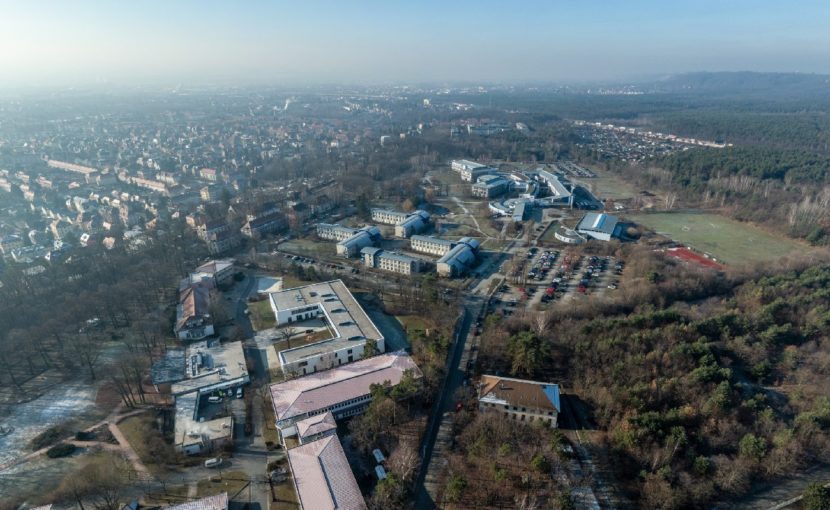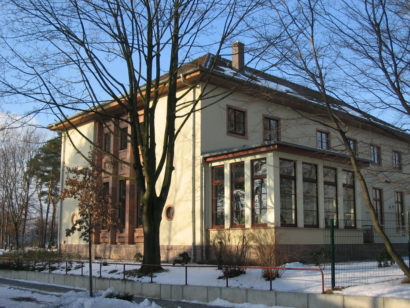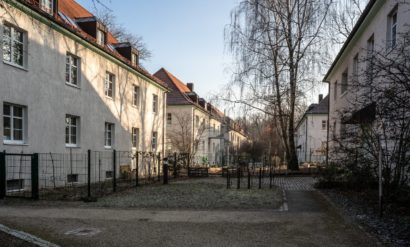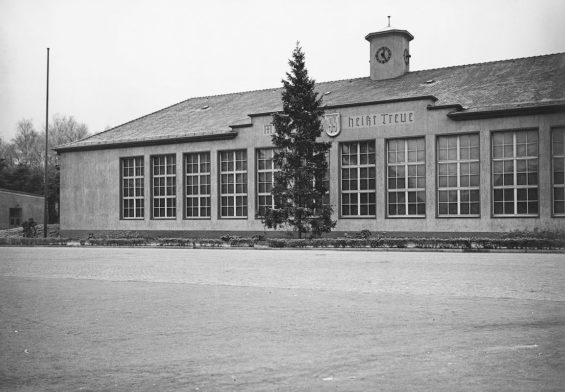Dresden (SS Engineer's Barracks) Subcamp
June 1942 – April 15, 1945
The longest existing Flossenbürg subcamp and the first in Dresden.
![]()
Grounds of the former SS Engineer's Barracks, 2019 (Flossenbürg Concentration Camp Memorial / Photo: Rainer Viertlböck). Today, in the buildings of the former barracks, there is an education center and a retail store selling building materials.
![]()
Building used for the former SS Engineer's Barracks, 2006 (Photo: Flossenbürg Concentration Camp Memorial).
![]()
Building used for the former SS Engineer's Barracks, 2019 (Flossenbürg Concentration Camp Memorial / Photo: Rainer Viertlböck).
![]()
SS Engineers’ Barracks Dresden, view of the parade hall, 1941 (Deutsche Fotothek Dresden).
-
Prisoners
The first prisoners were skilled construction workers – mostly Germans, along with a few Polish, Russian, and Czech inmates. They were joined later by Slovenians, Italians, French, and prisoners from four other countries. Prisoners were frequently transferred back to Flossenbürg. In December 1943, 198 men were in the SS Engineers’ Barracks, at the end of February 1945 their number was 120.
-
Forced labor and quarters
Construction of an auxiliary military sickbay in the SS Engineers’ Barracks and other construction work such as converting schools into medical facilities. Prisoners from Dresden were forced to do construction work in other subcamps as well (Neuhirschstein Castle, Seifhennersdorf). The men were quartered in three large garages, one of which also served as a washing facility.
-
Guards
Guard duty was performed at night by members of the Waffen SS injured at the front. While detail leader Josef Schmatz and his deputy and successor, Kurt Markgraf, violently mistreated the prisoners, detail leader Wilhelm Hartmann was considered too soft (see Seifhennersdorf) and replaced.
-
Death toll
Between three and seven deaths (according to eyewitness statements)
-
Disbanding of the camp / end of the war
The camp was disbanded around April 15, 1945, and the prisoners forced to march in the direction of Schmiedeberg. Numerous prisoners succeeded in escaping. The prisoners were liberated on May 8, 1945.
-
Commemoration
None



